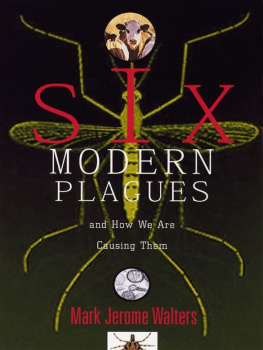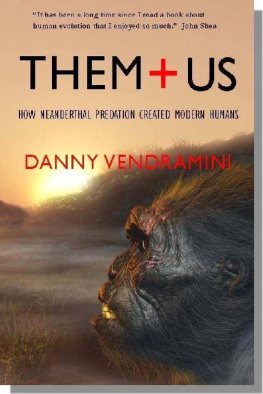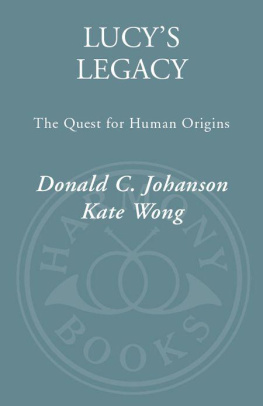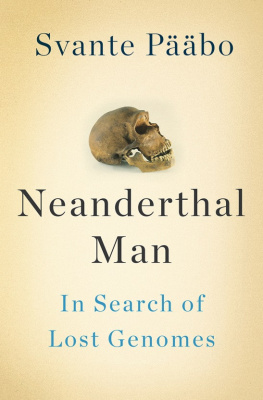CHRIS STRINGER
The Origin of Our Species

ALLEN LANE
an imprint of
PENGUIN BOOKS
ALLEN LANE
Published by the Penguin Group
Penguin Books Ltd, 80 Strand, London WC2R 0RL , England
Penguin Group (USA) Inc., 375 Hudson Street, New York, New York 10014, USA
Penguin Group (Canada), 90 Eglinton Avenue East, Suite 700, Toronto, Ontario, Canada M4P 2Y3
(a division of Pearson Penguin Canada Inc.)
Penguin Ireland, 25 St Stephens Green, Dublin 2, Ireland (a division of Penguin Books Ltd)
Penguin Group (Australia), 250 Camberwell Road, Camberwell, Victoria 3124, Australia (a division of Pearson Australia Group Pty Ltd)
Penguin Books India Pvt Ltd, 11 Community Centre, Panchsheel Park, New Delhi 110 017, India
Penguin Group (NZ), 67 Apollo Drive, Rosedale, Auckland 0632, New Zealand
(a division of Pearson New Zealand Ltd)
Penguin Books (South Africa) (Pty) Ltd, 24 Sturdee Avenue, Rosebank, Johannesburg 2196, South Africa
Penguin Books Ltd, Registered Offices: 80 Strand, London WC2R 0RL , England
www.penguin.com
First published 2011
Copyright Chris Stringer, 2011
The moral right of the author has been asserted
All rights reserved
Without limiting the rights under copyright reserved above, no part of this publication may be reproduced, stored in or introduced into a retrieval system, or transmitted, in any form or by any means (electronic, mechanical, photocopying, recording or otherwise) without the prior written permission of both the copyright owner and the above publisher of this book
ISBN: 978-0-14-196836-0
To the memory of lost family Tony and David, and lost colleagues Bill, Clark and Roger
Contents
List of Illustrations
Copyright information is given in parentheses.
Map showing early human sites in Europe (Chris Stringer)
Acknowledgements
Having worked in the field of palaeoanthropology for forty years I owe a huge debt to so many people, and my network of friends and collaborators seems to get larger rather than smaller as time progresses, which is gratifying. So I am not going to attempt to name and thank everyone who has helped me in significant ways, stretching back to my family and foster-family, my first teachers and supervisors, and those who welcomed me all over Europe as I began to gather data for my Ph.D. But many of my fellow researchers are identified in the book and bibliography by name, or through their ideas and influences on my thinking, and I hope I have represented their views fairly and accurately. I am certainly standing on the shoulders of giants as I grapple with reconstructing our evolutionary past, but I have also been greatly helped along the way by innumerable acts of kindness and generosity. My membership of three consortia the completed Cambridge Stage Three project, the NERC-funded RESET project, and the AHOB project, funded by the Leverhulme Trust has also greatly benefited me.
For this book I am particularly grateful to Robert Kruszynski, Rebecca Varley-Winter and Gabrielle Delbarre for their help with the bibliography, and for illustrations my thanks go to the Natural History Museum Department of Palaeontology, Photo Unit and Image Resources, Silvia Bello for the excellent maps, and all those colleagues I have individually credited for their generous help. I am also very grateful to the editorial and production staff at Penguin Books for all their work in bringing this book to publication.
Introduction
We have just celebrated the 150th anniversary of the publication of Darwins On the Origin of Species and his 200th birthday, and evolution by natural selection is now widely accepted. But what do we know about the origin of our own species, Homo sapiens? Despite the fascinating and growing record of very ancient prehuman fossils, one topic has dominated recent scientific and popular discussion about evolution our own origins. While it is generally agreed that Africa was the homeland of our earliest human ancestors, a fierce debate continues about whether it was also the ultimate place of origin of our own species, and of everything that we consider typical of our species, such as language, art and complex technology. Originally centred on the fossil record, the debate has grown to encompass archaeological and genetic data, and the latter have become increasingly significant, now even including DNA from Neanderthal fossils. Yet much of these new data and the discussions surrounding them are buried in highly technical presentations, scattered in specialist journals and books, so it is difficult for a general readership, however informed, to get an accessible overview. In this book I want to try and provide a comprehensive but comprehensible account of the origin of our species from my position in these debates over the last thirty years or so. I hope my book will make every reader think about what it means to be human, and change their perceptions about our origins writing it has certainly changed some of mine!
I regularly give talks on human evolution and receive hundreds of enquiries on this topic every year from the media and the public. The same questions recur time and again, and in this book I will try to answer them. These questions include:
What are the big questions in the debate about our origins?
How can we define modern humans, and how can we recognize our beginnings in the fossil and archaeological record?
How can we accurately date fossils, including ones beyond the range of radiocarbon dating?
What do the genetic data really tell us about our origins, and were our origins solely in Africa?
Are modern humans a distinct species from ancient people such as the Neanderthals?
How can we recognize modern humans behaviourally, and were traits such as complex language and art unique to modern humans?
What contact did our ancestors have with people like the Neanderthals, and were we the cause of their extinction?
Do archaic features in modern human fossils and genes outside Africa indicate hybridization?
What does DNA tell us about the Neanderthals, and possible interbreeding with modern humans?
What can we learn from a complete Neanderthal genome, and will we ever clone a Neanderthal?
What forces shaped the origins of modern humans were they climatic, dietary, social or even volcanic?
What drove the dispersals of modern humans from Africa, and how did our species spread over the globe?
How did regional (racial) features evolve, and how significant are they?
What was the Hobbit of the island of Flores, and how was it related to us?
Has human evolution stopped, or are we still evolving?
What can we expect from future research on our origins?
It is now over twenty years since the publication of the seminal Nature paper Mitochondrial DNA and Human Evolution, by Rebecca Cann, Mark Stoneking and Allan Wilson that put modern human origins and Mitochondrial Eve on the front pages of newspapers and journals all over the world for the first time. Not only did that paper focus attention on the evolution of our own species, but it also led to a fundamental reformulation of scientific arguments about the way that we look at our own origins. A year after that publication, I wrote the paper Genetic and Fossil Evidence for the Origin of Modern Humans for the journal Science with my colleague Peter Andrews, that set out the contrasting models of modern human origins that have dominated debate ever since: Recent African Origin, and Multiregional Evolution. Later in the book we will see how these models have fared in the face of many new discoveries, but in the first chapter I will look at some of the big questions of modern human origins, including what diagnoses our species, what the recent debates are all about, and how the different models lay out expectations of what we should find in the record of modern human evolution, from fossils, archaeology and genetics.








